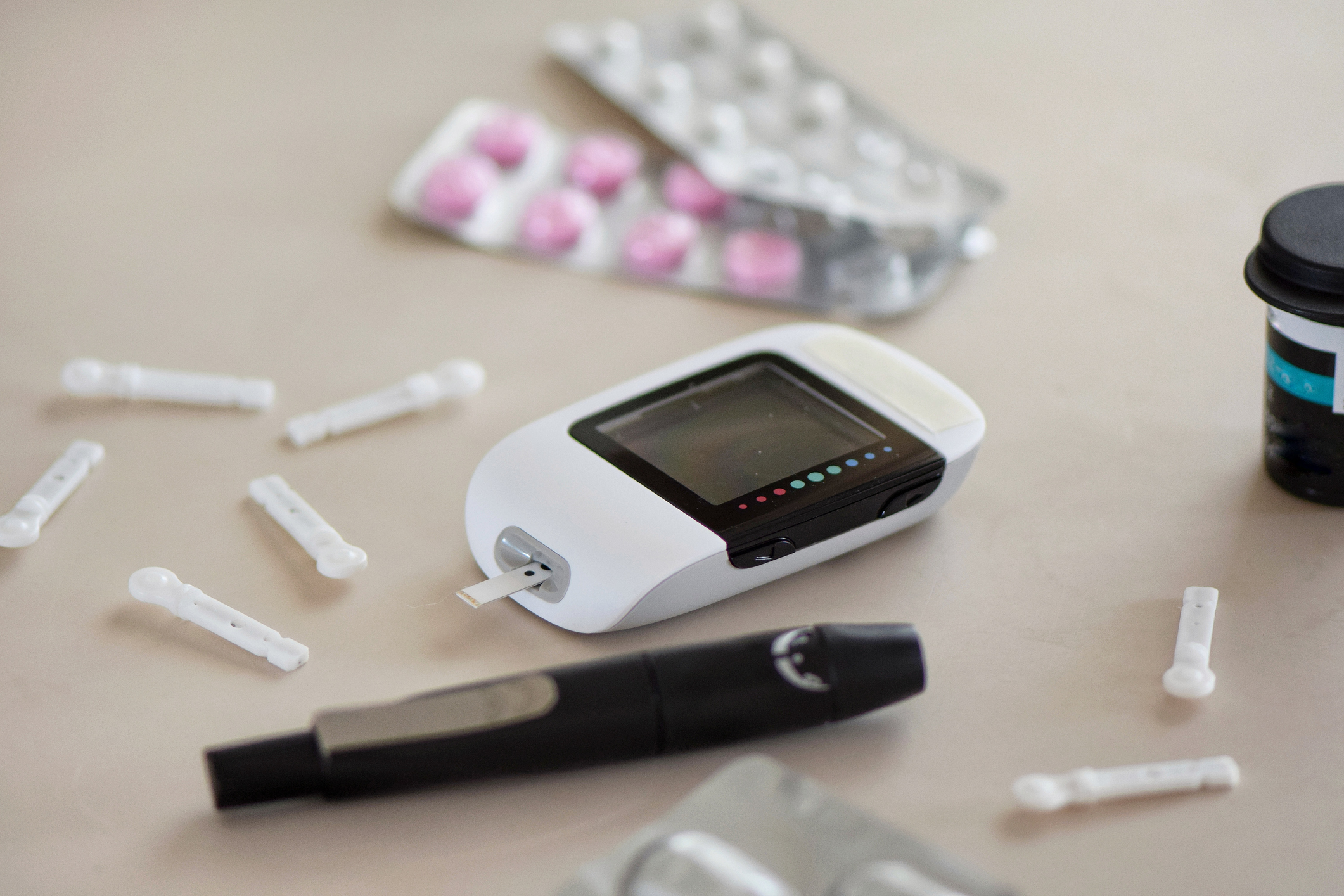November is National Diabetes Month. This is a time when it is necessary to focus on prevention, awareness and management. Most are aware that diabetes and hypertension are the number two risk factors for kidney disease. Not all patients with kidney disease have diabetes or hypertension but some have both. Educate yourself about diabetes—know the risk factors, your family history, exercise and eat healthy. Diabetes can be fatal but it can also be managed. It is always advisable to consult with a physician.
There are numerous findings that children with diabetes should be genetically tested because in some cases, diabetes is hereditary. It is also advisable that adults should be genetically tested if diagnosed with diabetes or borderline diabetes.
The following information has been retrieved from several websites that will aid you in getting knowledge about adults and children with diabetes.
The following information was retrieved from American Diabetes Association (https://diabetes.org/)
Warning Signs and Symptoms
Know the warning signs and symptoms of diabetes and diabetes complications so you can take action to improve your health
The following symptoms of diabetes are typical. However, some people with diabetes have symptoms so mild that they go unnoticed.
Common symptoms of diabetes:
- Urinating often
- Feeling very thirsty
- Feeling very hungry—even though you are eating
- Extreme fatigue
- Blurry vision
- Cuts/bruises that are slow to heal
- Weight loss—even though you are eating more (type 1)
- Tingling, pain, or numbness in the hands/feet (type 2)
Early detection and treatment of diabetes can decrease the risk of developing the complications of diabetes.
ABOUT DIABETES
Type 1 & 2 Symptoms
For some, symptoms are noticeable, and for others, they’re so mild they go unnoticed. Either way, learn what to look out for to reduce your risk of complications.
The following information was retrieved from Nationwide Children’s Hospital (https://www.nationwidechildrens.org/)
What Is Diabetes – MODY?
MODY is the name given to a collection of different types of inherited forms of diabetes that usually develop in adolescence or early adulthood. MODY stands for “Maturity-onset diabetes of the young” and was given that name in the past because it acted more like adult type of diabetes (Type 2 Diabetes) but was found in young people.
MODY limits the body’s ability to produce insulin, but is different than the juvenile type of diabetes (Type 1 Diabetes). When our bodies don’t produce enough insulin, it can increase blood glucose levels. High blood glucose levels lead to diabetes.
Facts about MODY:
- MODY accounts for approximately 5 percent of all U.S. diabetes cases.
- High blood glucose levels can damage body tissues over time, including the eyes, kidneys, nerves and blood vessels.
- MODY can show up at any age.
What Are the Signs and Symptoms of MODY?
People with MODY may have mild diabetes symptoms. MODY symptoms tend to develop gradually, so you may have no symptoms at first. That’s why MODY is often left undiscovered until later in life or may be confused with type 1 or type 2 diabetes.
Symptoms may include:
- Frequent urination
- Thirst
- Blurry vision
- Recurrent skin infections
- Recurrent yeast infections
People with MODY may have high blood sugar levels for many years before they experience any symptoms.
What Causes MODY?
MODY is a “monogenic” disease. This means it is caused by a single gene mutation.
A number of different gene mutations can cause MODY. If you have a family member with MODY, you have an increased risk for the condition.
While type 2 diabetes and MODY can both run in families, individuals diagnosed with MODY often have a family history of diabetes in successive generations: meaning MODY is present in a grandparent, parent and child.
How Is MODY Diagnosed?
A blood sugar test is the first step toward diagnosing MODY. If your results indicate you have diabetes, your doctor may order additional tests to determine if you have MODY or another type of diabetes, such as type 1 or 2.
Since MODY is caused by a genetic mutation, a genetic test can also help diagnose it. This testing will determine the exact type of MODY.
MODY is caused by a genetic mutation passed on through the family. There’s currently no way to prevent or cure it, but it can be managed, and predicted. Knowledge is power.
How Is MODY Treated?
MODY is often treated with oral medications or insulin injections, and some forms may not require any treatment. The specific treatment may vary depending on what genetic mutation caused the condition.
When Should You Seek Help for MODY?
If you suspect your child has MODY, talk to his or her health care provider as soon as possible. An evaluation with a pediatric endocrinologist experienced with MODY (like those at Nationwide Children’s Hospital) can be helpful.
The following information was retrieved from Boston’s Children’s Hospital (https://www.children’s hospital.org)
What is monogenic diabetes?
Monogenic diabetes makes up approximately 2 to 6 percent of pediatric diabetes cases. Unlike type 1 (85 to 90 percent of pediatric diabetes) and type 2 (5 to 10 percent of pediatric diabetes), which are caused by a lot of small changes throughout the genome, monogenic diabetes occurs because of a change in one single gene. The number of recognized single-gene causes for diabetes is growing.
Monogenic Diabetes |Symptoms & Causes
What are the symptoms of monogenic diabetes in children?
Individuals with monogenic diabetes may have a variety of symptoms. Most forms will have symptoms similar to type 1 diabetes or type 2 diabetes, such as:
- Frequent urination
- Feeling very thirsty or hungry, even after meals
- Fatigue
- Numbness or tingling in hands or feet
However, in some cases, young people with monogenic diabetes have no symptoms and are incidentally found to have high blood glucose levels.
Monogenic Diabetes |Diagnosis & Treatments
How is monogenic diabetes diagnosed?
Genetic testing is required to diagnose monogenic diabetes. Genetic testing can be performed after obtaining a buccal (cheek) swab. This swab will then be sent to the lab, where they will test for genetic causes of diabetes.
How we approach monogenic diabetes at Boston Children’s Hospital
We take an individualized approach to each patient. For individuals that may have monogenic diabetes, we will pursue genetic testing. Once testing is complete and we have determined a specific diagnosis, we will deliver a care plan and treatment recommendations. Some patients with monogenic diabetes can take an oral medication instead of insulin, and some may not require any medication at all. Part of every patient’s care is discussion and monitoring of future health implications.
There are times when initial genetic testing does not identify a genetic cause for diabetes. In this situation, we will discuss if additional testing is warranted, and we can provide resources to research studies, if interested.




